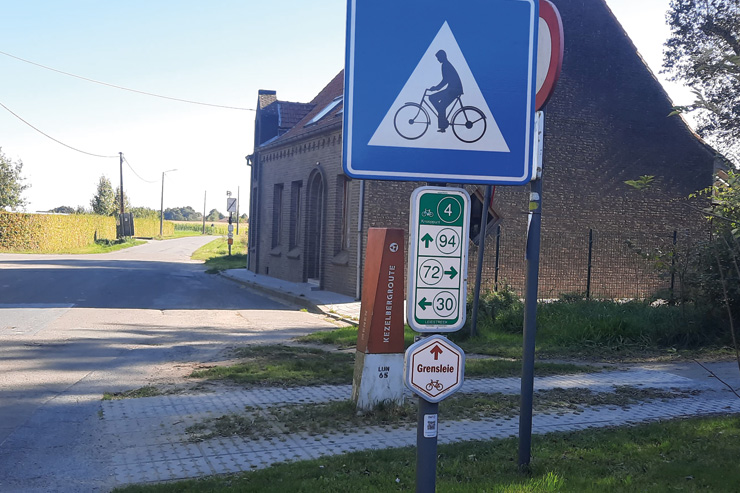Tourism Flanders recognizes Ter Ast as a five-star accommodation
Enjoy our special launch conditions (valid when booking a stay before June 30th 2025) .
Enter TA2025L as a promotion code and receive a 150 euro discount on your booking.
Relax in the midst of nature in our unique oast house
Starting in November 2024, we welcome people looking for rest, relaxation and inspiration in “Ter Ast”, a unique heritage location in a rural setting. “Ter Ast” has been given a new purpose as a vacation home and meeting place for groups of 8 to 18 people.
The spacious building has 5 bedrooms, 4 showers / 1 bath, 2 lounges with additional sleeping accommodations, 2 kitchens. The ground floor is wheelchair accessible with adapted sanitary facilities. There is a separate bicycle shed.
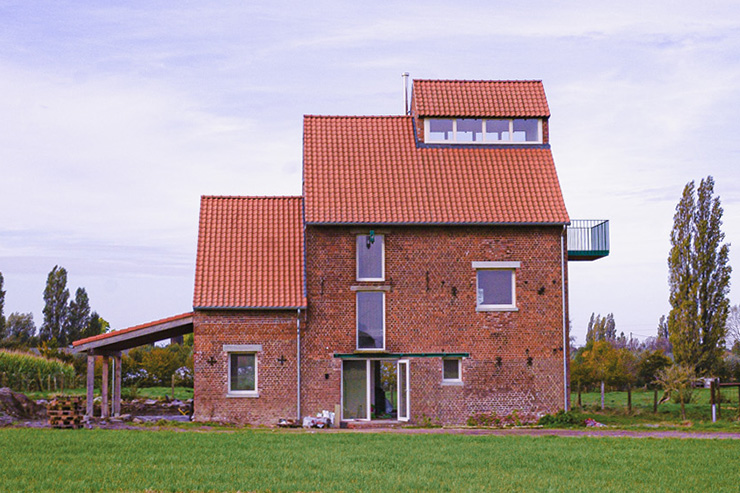
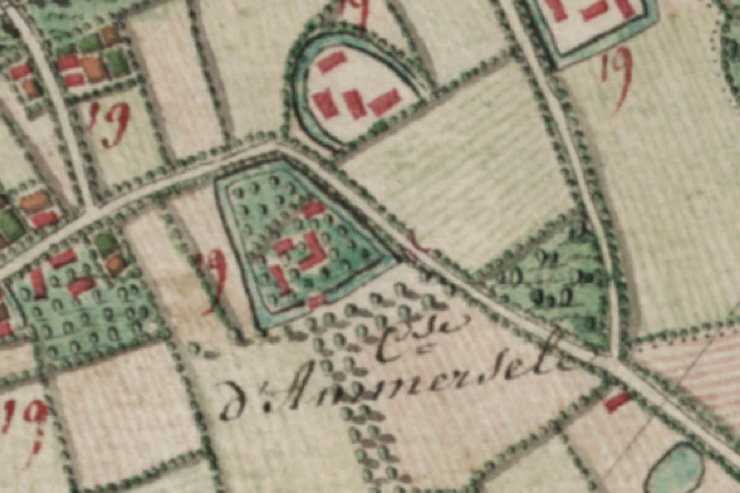
History
The former chicory oast house of a farm located in Wevelgem, known from the Flanders cycling classic Gent-Wevelgem, has been renovated with love and craftmanship. The name 'Ter Ast' means "In the Oast House" in Dutch.
The oast house belongs to a partially-walled farm, whose history dates back to at least the 15th century. The farm is historically known as the "Harelbeeks Goed". In it’s research of local estates, the local heritage association found a lease agreement dating back to 1404 of the "Goed Haerlebec".
The evolution of the structure of the farmstead can be seen on the Ferraris map from the period 1771-1778 during the period of the Austrian Netherlands, and the 1841 Atlas of Neighborhood Roads.
The Geldof family has lived on the farmstead for more than 100 years.
In 1919, Camiel Geldof (°1874 +1928) and Flavie Commeyne (°1881 +1951) moved to the farm with their children. Son Maurice (°1922 +2004) continued the farm with his wife Francine Douchy, whom he married in 1957.
Several years ago, the family decided to renovate the farm buildings, starting with the renovation of the barn (completed in 2021). In 2023, renovations were started in the oast house.
In the past, flax and chicory were grown on the fertile fields of the farm. The harvested chicory roots were dried in the oast house during the winter months.
Whereas oast houses in South East England – e.g. Kent – were used to dry hops used in the beer brewery process, oast houses in West Flanders were built to dry the roots of chicory that was used as a replacement or addition to coffee.
The oast house, dating from the second half of the 19th century, was partially destroyed by a fire in 1946, and remained after reconstruction in operation until 1974.
A great base to expolore the rich culture and history of the Leie region
We would like to introduce you to the chicory cultivation, flax industry and trade, activities in which our families were active several generations ago.
We attach great importance to social connection and to the preservation of heritage, nature, exercise, health and wellbeing. We encourage everyone to take care of the environment and move in an environmentally friendly way.
"Ter Ast" caters to groups who want to get out together for a few days. Located on cycling and walking routes, it is an ideal place for sports enthusiasts. During the week, companies and organizations can also use it for activities that promote movement, health, well-being, social connection, culture, innovation and creativity. We provide an unforgettable indoor or outdoor experience in a special setting.
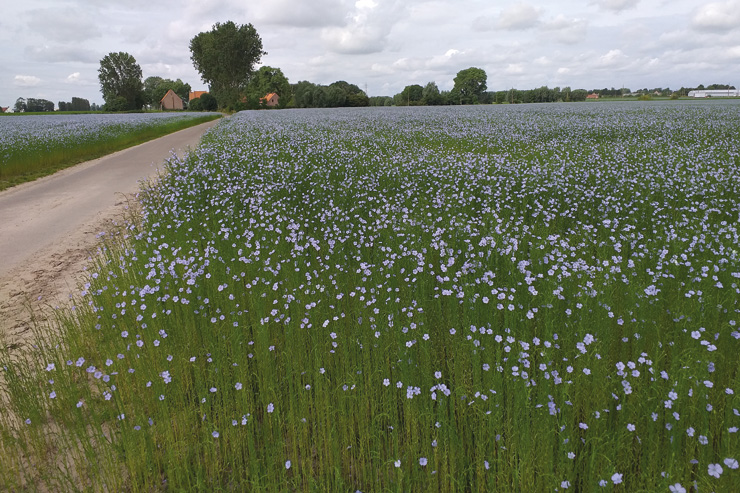
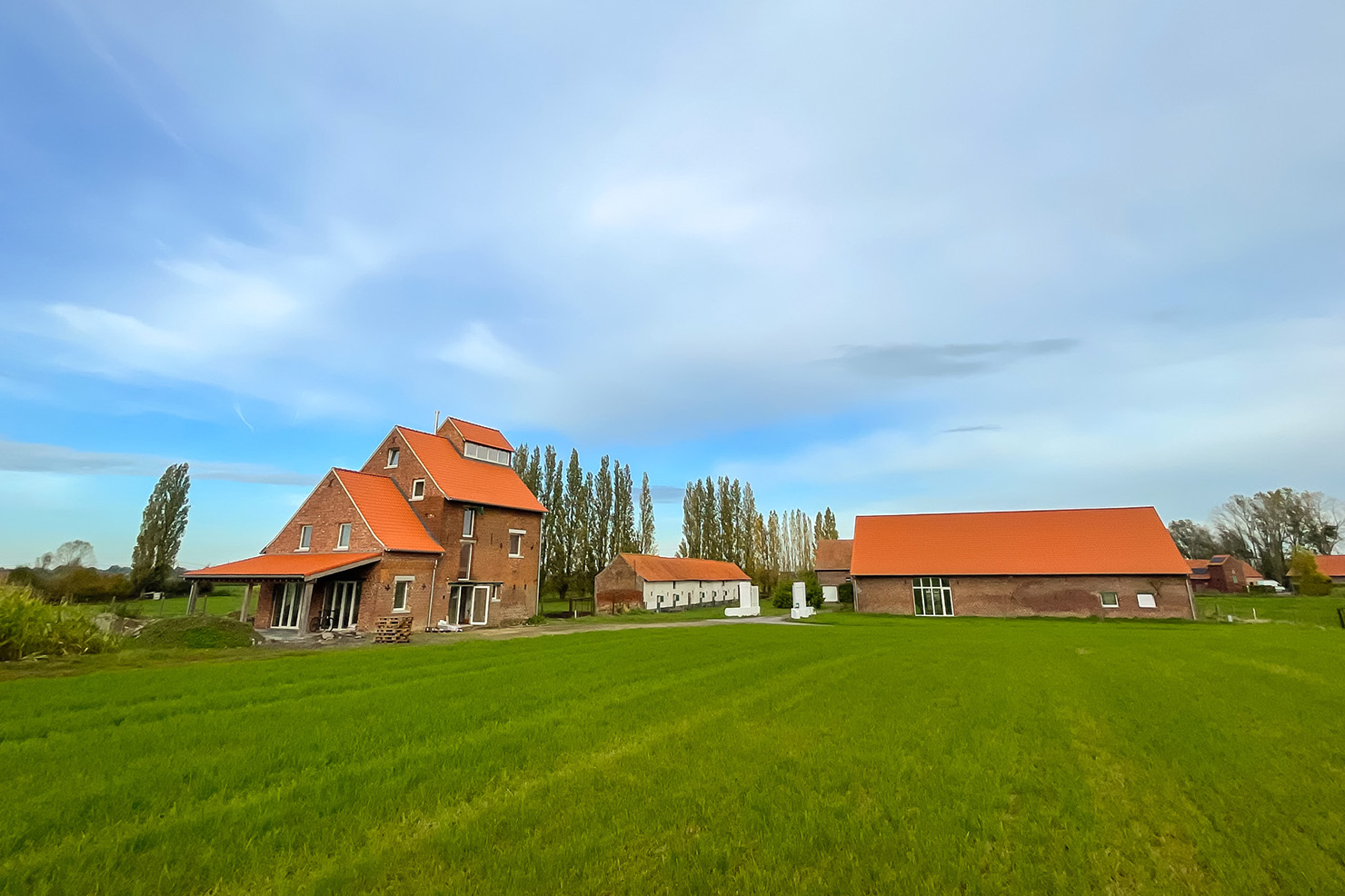
Renovated with attention to sustainability, nature, heritage and sustainability
Michiel, great-grandson of Flavie and Camiel, and co-founder of the Brussels architectural firm Agmen, developed the renovation plans. For the renovation and interior design, we chose to work with contractors and suppliers from the region.
The heart of the oast house is the former authentically preserved space where the fireplaces were lit, and is now furnished as a cozy room with a fireplace.
There is a panoramic view of the surroundings from the tower room, the building’s former chimney.
Original elements have been preserved as much as possible. Such include the pulley on the front facade, the stone sink on the rear facade where the mined chicory roots were washed and the stone floor of the covered terrace.
The sliding gates on the front and side of the building were made in the original model and color.
Another heritage element, the chain with paddles that brought the chicory from the lower to upper floors, will be placed in the entrance hall after restoration.
We highly value sustainability and therefore have ensured an ecological water and energy supply (rainwater/ heat pumps / water treatment via IBA). In the renovation, ecological and circular building materials have been used. Existing materials (brick, stone floor under roofed terrace...) were re-used to the maximum extent. Lime plaster was chosen, while the interior is insulated with wood fiber and the roof insulation with cellulose flakes.
Would you like to learn more about the region?
“Ter Ast” is located close to Ypres (city of peace, Flanders Field museum, daily last post) and the Unesco cultural heritage memorial places located in the Westhoek. The cultural cities of Ghent, Bruges, Kortrijk and Lille (France) as well as the Belgian coast are located less than one hour by car.
Take a biking trip along iconic cycling routes and discover all the region has to offer you . Don’t forget to taste regional delicacies, cookies, beer, wine and cheese, or visit one of the local breweries or vineyards.
